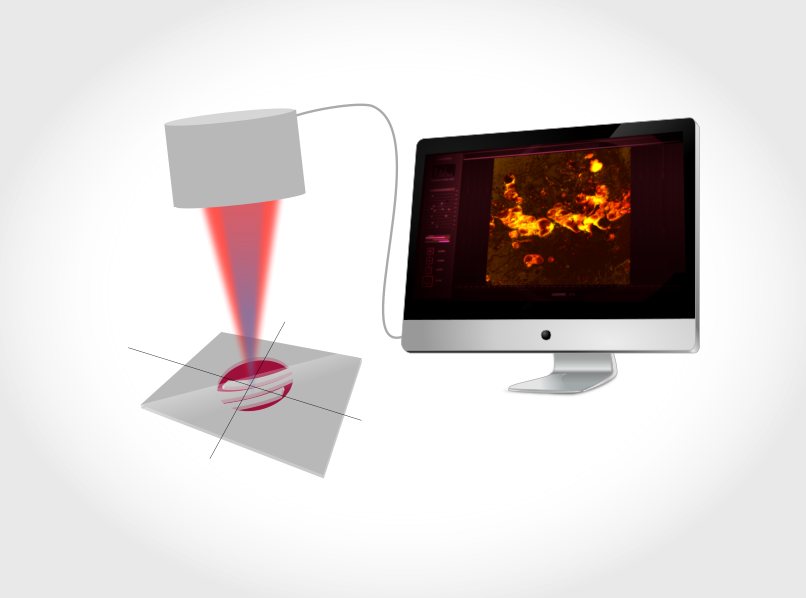Imaging methods based on coherent Raman scattering (CRS) are, nowadays, among the most potent techniques for a rapid visualization of the chemical composition of complex structures with sub-micrometer resolution. In particular, these methods are called Coherent Anti-Stokes Raman Scattering (CARS) and Stimulated Raman Scattering (SRS).
Both involve third-order nonlinear optical processes (χ(3)) where three electromagnetic waves interact with the sample volume to generate a characteristic optical signal. Upon coincidence of the difference frequency of a pair of such waves corresponding to the frequency of a Raman resonance, the signal is greatly enhanced. These techniques are typically employed to image bio-molecules in living or fixed cells or tissues. They offer the great advantage to not require any sort of labeling or staining [1]. Additionally, spectral information is obtained using broadband light sources [2]. The signal-to-noise ratio of these applications benefits greatly from the application of pulsed lasers at high repetition rates.
AFS offers compact, alignment-free sources for hyperspectral coherent Raman spectroscopy fully based on fiber-technology. The extreme tuning speed of our sources enables coverage of all resonances within a few seconds. The outstanding functionality of the systems has been proven in laboratory and clinical environments many times over the last years [3,4,5].
View in AR-App

- REFERENCES
- CONTACT
[1] Cheng, Ji-Xin; Xie, Xiaoliang Sunney "Coherent raman scattering microscopy". Boca Raton, London, New York: CRC Press, Series in cellular and clinical imaging (2018).
[2] D. Polli, V. Kumar, C. M. Valensise, M. Marangoni, and G. Cerullo, Broadband Coherent Raman Scattering Microscopy". Laser Photonics Rev. 12 (9) 1800020 (2018).
[3] F. B. Legesse, T. Meyer, S. Heuke, T. Gottschall, T. Pascher, J. Limpert, A. Tünnermann, M. Schmitt, and J. Popp, "Dual-focus coherent anti-Stokes Raman scattering microscopy using a compact two-beam fiber laser source" Opt. Lett. 42, 183 (2017).
[4] C. Krafft, I. W. Schie, T. Meyer, M. Schmitt, and J. Popp, "Developments in spontaneous and coherent Raman scattering microscopic imaging for biomedical applications" Chem. Soc. Rev. 45, 1819–1849 (2016).
[5] T. Gottschall, T. Meyer-Zedler, M. Schmitt, R. Huber, J. Popp, A. Tünnermann, J. Limpert, "Ultra-compact tunable fiber laser for coherent anti-Stokes Raman imaging" J Raman Spectrosc 1 2021.


